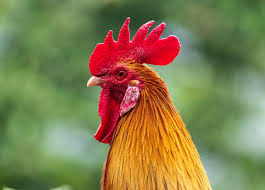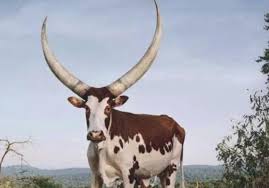Compound Vitamin Premix
Name:
Compound Vitamin Premix
Common Capacity:
- Premix Powder: 1KG/bag , 5KG/bag , 10KG/bag
Common Concentration:
- Premix Powder: OEM/CUSTOMIZED
Applicable Animals:
Compound Vitamin Premix is a feed additive consisting of multiple vitamins mixed in specific proportions, used to supplement daily vitamin requirements of animals, maintain normal physiological functions, promote growth and development, and enhance disease resistance. Vitamins are essential trace organic compounds for animals, playing crucial regulatory roles and participating in the metabolism of carbohydrates, fats, and proteins.
Applicable Animals in Global Animal Husbandry:
- Poultry (Chickens, Ducks, Geese, Turkeys, etc.): To supplement various vitamins required for growth, egg production, and reproduction, improve feed conversion rate, egg production rate, hatchability, and reduce stress reactions.
- Monogastric Animals (Pigs): To meet the vitamin requirements at different growth stages (piglets, growing-finishing pigs, sows), promote growth, improve reproductive performance, and enhance immunity.
- Ruminant Animals (Cattle, Sheep, etc.): To supplement vitamins, especially during periods of insufficient green fodder or high production, to maintain health and improve productivity (milk yield, weight gain).
- Aquatic Animals (Fish, Shrimp, etc.): To supplement specific vitamins required for aquatic animal growth, improve feed utilization, enhance disease resistance, and promote healthy growth.
- Special Farming Animals (Rabbits, Minks, Foxes, etc.): To provide appropriate amounts of vitamins according to their specific nutritional needs to maintain health and productivity.
Usage and Dosage:
The formulation and inclusion rate of compound vitamin premixes are typically customized based on factors such as animal species, physiological stage, feed composition, and farming environment. Since the concentration is “OEM/CUSTOMIZED” 4, specific usage and dosage should be determined according to the actual product label or manufacturer’s guidelines.
Generally, premixes are added to complete feed at certain proportions for mixed feeding. The following are general references; please consult the product supplier or a professional veterinarian for specifics:
Premix Powder (Mixed with feed):
- Common farmed animals (Pigs, Poultry, etc.): Typically added at a rate of 0.1% – 1% to the feed, i.e., 1-10 kg of compound vitamin premix per ton of feed.
- Young animals/chicks: The inclusion rate can be appropriately increased during early growth or periods of stress.
- Breeding animals: Vitamin requirements increase during the breeding season or peak egg-laying period to support reproductive performance.
Dosage by Growth Stage:
- Young animals: To ensure their normal growth and development and healthy bones.
- Growing/Finishing animals: To meet the vitamin requirements for rapid growth and improve feed conversion efficiency.
- Breeding animals: To maintain good reproductive performance, increase fertilization rates, hatchability, conception rates, and litter sizes.
- Animals in recovery or stress periods: To enhance the body’s resistance and accelerate recovery.
Applicable Diseases and Symptoms:
Compound vitamin premixes are primarily used for the prevention and auxiliary treatment of nutritional metabolic diseases caused by vitamin deficiencies, and as adjunctive therapy to enhance animal resistance.
- Vitamin Deficiencies:
- Vitamin A deficiency: Night blindness, xerophthalmia, stunted growth, reproductive disorders.
- Vitamin D deficiency: Rickets, osteomalacia, poor eggshell quality.
- Vitamin E deficiency: Muscular dystrophy, exudative diathesis in chicks, white muscle disease, reproductive disorders.
- Vitamin K deficiency: Hemorrhagic diseases.
- B-vitamin deficiencies: Anorexia, indigestion, neurological symptoms, dermatitis, growth arrest.
- Stress Reactions: Transportation stress, group change stress, climate change stress, vaccination stress, etc., can enhance the animal’s ability to cope with stress.
- Low Immunity: To improve non-specific and specific immunity in animals, reducing disease incidence.
- Low Feed Conversion Rate: To optimize feed nutrient utilization and improve weight gain efficiency.
- Decreased Reproductive Performance: To improve reproductive performance, increasing egg production, hatchability, conception rates, and litter sizes.
Precautions:
- Uniform Mixing: When using premixes, they must be thoroughly and evenly mixed with the feed to avoid localized concentrations that are too high or too low.
- Storage Conditions: Premixes should be stored in a cool, dry, dark place, tightly sealed to prevent moisture and oxidation, which can affect vitamin activity.
- Avoid High Temperatures: Vitamins are sensitive to heat, so avoid high-temperature processing when mixing feed to prevent vitamin destruction.
- Appropriate Addition: Strictly adhere to the recommended dosage; excessive addition can lead to vitamin toxicity, while insufficient amounts will not achieve the desired effect.
- Shelf Life: Pay attention to the product’s shelf life; expired products may have reduced vitamin activity.
- Compatibility: Avoid co-administration with substances that may destroy vitamins or affect their absorption, such as some oxidizing agents.
Contraindications:
- Contraindicated in animals with a known allergy to any component of the product (rarely occurs).
- Strictly follow the dosage instructions to avoid overdose, especially for fat-soluble vitamins (A, D, E, K), which can cause toxicity if given in excess.
Post-Administration Care:
- Continuous Observation: Closely observe the animal’s feed intake, growth rate, mental state, coat, and skin condition to evaluate the effectiveness of vitamin supplementation.
- Rational Feeding: Ensure the provision of a balanced complete feed; vitamin premixes are supplements and cannot replace other essential nutrients.
- Environmental Management: Maintain a good farming environment to reduce disease incidence, which helps with vitamin absorption and utilization.
- Regular Assessment: Periodically evaluate whether the vitamin supplementation plan needs adjustment based on the production performance, health status of the animal group, and feed formulation.
Applicable Animals
Animal species suitable for this veterinary medication




